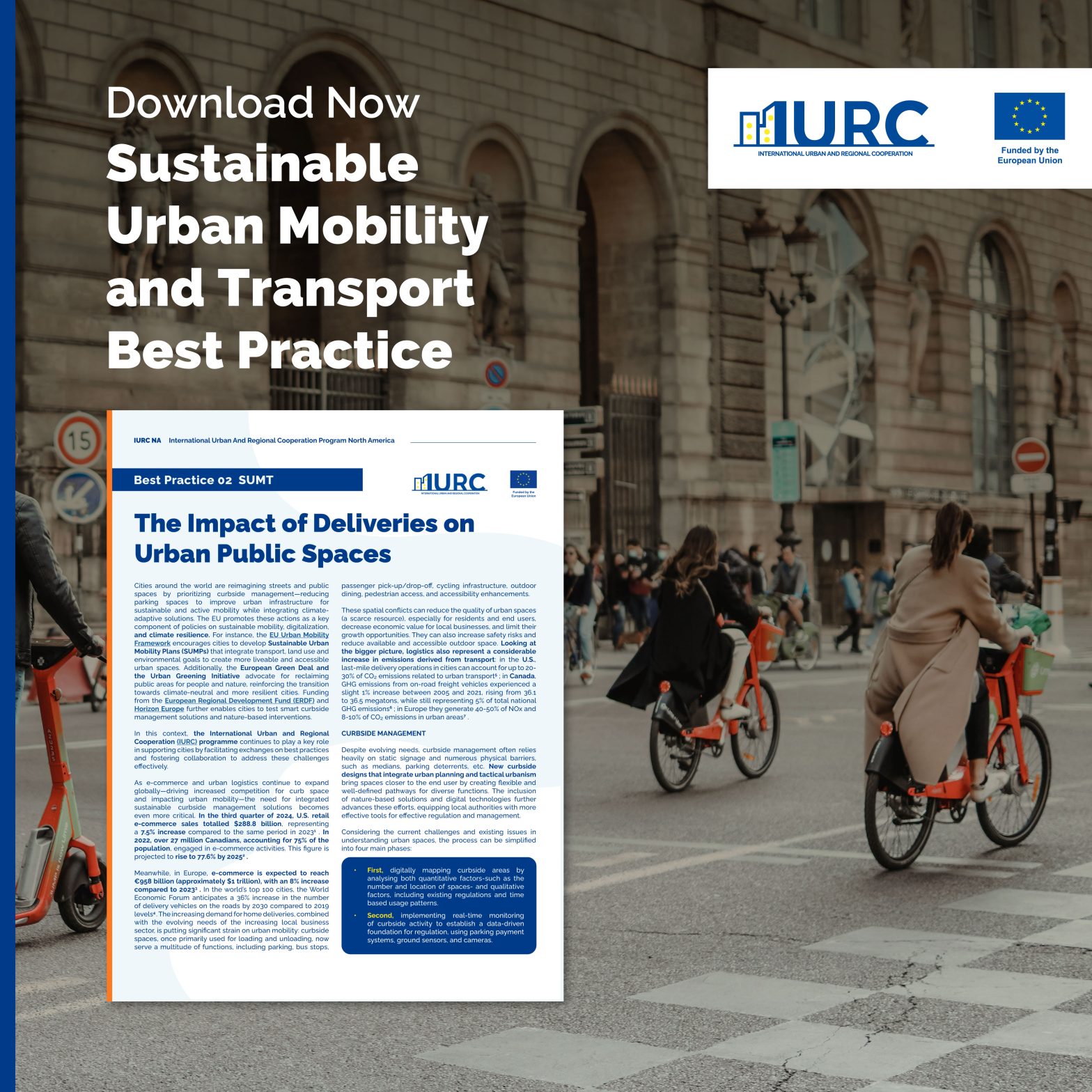April 15th, 2025
In this Best Practice, we explore how the rise of e-commerce is transforming urban life starting at the curb.
As urban deliveries increase and cities aim to create more sustainable, people-centered environments, curbside space faces growing pressure from competing uses such as loading zones, cycling infrastructure, EV charging, outdoor dining and pedestrian access. This transformation aligns with the objectives of the European Green Deal, which promotes cleaner, smarter urban mobility, and is operationalized through Sustainable Urban Mobility Plans (SUMPs)—the EU’s key tool for helping cities reduce emissions, improve air quality and reclaim public space. Rethinking curbside management is thus essential for aligning local actions with broader EU sustainability and climate goals.
From Madrid’s tech-enabled loading zones and Pittsburgh’s smart curb pilots to North Vancouver’s community-driven planning, urban areas around the world are pioneering new models of curbside management. These strategies combine digital innovation, data-driven decision-making, and public engagement to create streets that are more efficient, inclusive, and climate-resilient.
Read the full Best Practice to discover how cities are reclaiming the curb to better serve residents, businesses and the planet.
